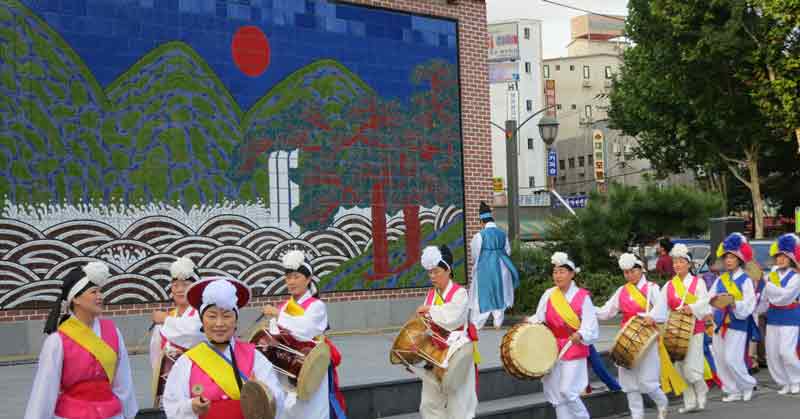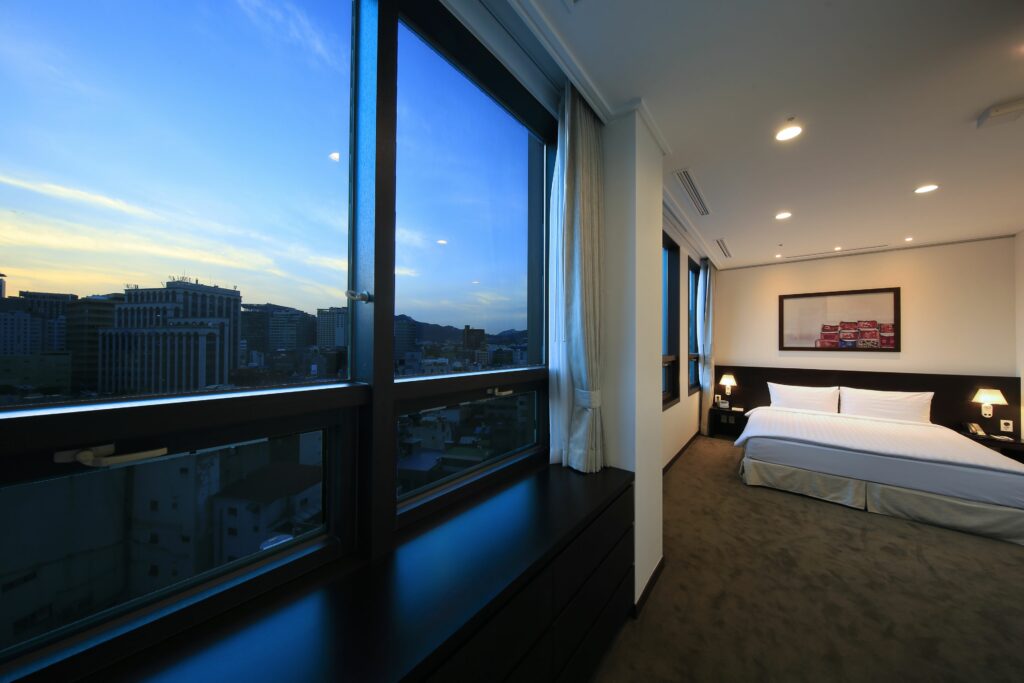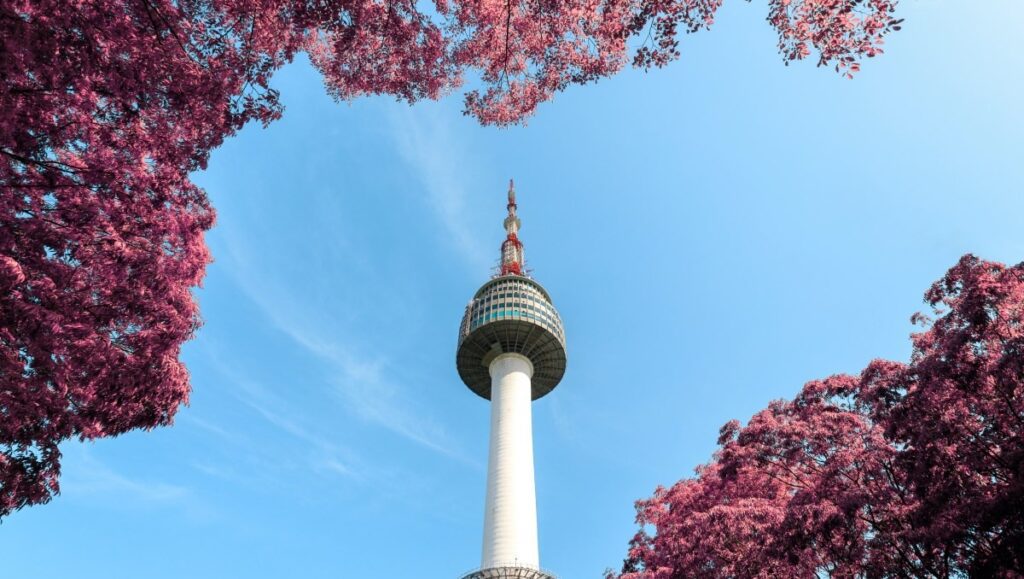Compared to North America, one of the best things about living in Asia (and Europe) is that experiencing another country an culture is always just a short flight away. One of our favourite of these short excursions was Seoul, Korea.
Insadong
I doubt any travel site or blog about Seoul would not include Insadong in the itinerary. A bustling shopping district (although not as crazy as others, see below) this district exemplifies the blend of modern and historic culture of Korea. Here you’ll find an eclectic mix of Seoul’s ultra-hip fashion boutiques next to antique stores and traditional tea shops.
If there is one piece of advice regarding visiting Insadong is to come on an empty stomach. Famous for the variety of food stalls along the busy streets, you will find no shortage of culinary treats both adventurous and guilt-inducing. Where else can you try ddong ppang, which translates to… wait for it… “poo shaped pancakes!” (it’s actually a pancake with chocolate inside, pretty yummy).
Another favorite to be found here is hotteok, a type of fried donut filled with some sort of sweet gooey filling. Judging by the lineups at the stalls, it’s obviously a local favorite, and once you take a bite, it’s easy to find out why. For those who prefer savory, there are endless options of barbeque chicken, squid, [insert protein of choice].
One of the cooler spots in Insadong is Insadong Samziegil, a four-story, square shaped shopping plaza.

While the main Insadong street can fill an entire day, there are many side streets to explore, many with sit-down restaurants. Despite literally eating breakfast, brunch, lunch, and afternoon snacks as we explored Insadong, we settled down for a delicious BBQ dinner to close out our day.
Namsan Mountain
Another popular tourist location we visited was Namsan Mountain, famous for its panoramic views of downtown Seoul. For the locals, Namsam is like Central Park in New York, providing a green reprieve from the urban hustle and bustle. The peak of Namsam reaches 262 meters, but you could also visit the N Seoul Tower that sits on top of the peak which almost doubles the altitude.
Some people chose to hike to the top of Namsan, which is about a 20 to 30 minute walk, but with a 4-year old and a baby in a stroller, we elected to take the cable car, which only takes 3 minutes.
Make It Easier
We were in luck when we visited Seoul, as we (unplanned) visited in the middle of Chuseok, which is effectively Korean’s version of thanksgiving. So once we got to the park at the top of the mountain, we found ourselves in the middle of a cultural celebration with a variety of free family activities.
This gave DS a chance to burn off his energy and boredom (he was very good throughout the trip), trying his hand in a number of traditional children’s games such as tuho, a game favored by the royals of old, which involves throwing arrows into a cylinder. DS tried a few times from a good distance away, but after a few failed tries, eventually did what every kid his age does – walk up to the cylinder and stuff the arrow in. He also tried his hand (or feet) in jegichagi, which is very similar to what we call a hacky-sack.
Namsan is not only for families, but apparently also a popular spot for couples as well. Here you will find the Namsan Love Locks, a fence that has become a solid wall of locks. Each lock is heart shaped, with the (what I presume) to be messages of love written on them. There are literally millions of locks and to be honest, I’m not sure how a budding couple would be able to find room for one more.
Of course, one of the key reasons for visiting Namsan is for the panoramic views of the city. The park is surrounded by a glass fence, which provides a clear view of Seoul. If you’d like more of a bird’s-eye view, you could take a ride up to the observatory decks at the top of N Seoul Tower. There are four observatory decks to visit, including the obligatory revolving restaurant and a “digital observatory” which showcases Korea’s history through a 360 degree LCD screen.
Make It Easier
Namsangol Hanok
We visited Namsangol Hanok situated on the north side of Namsan Mountain. It is a traditional village from the Joseon Dynasty (1300s through 1910), and was once called Cheonghak-dong, “the place where the gods live” due to its breathtaking scenery. The Hanoks (traditional Korean houses) were actually originally from various parts of the city, but were relocated to create the village.
When we visited, the village was bustling due to the Chuseok celebrations, which meant a lot of additional activities and performances that would not have occurred had we visited another time. In addition to exploring the hanoks and gardens, we were entertained by dance and musical performances scheduled throughout the day. DS was kept busy with a number of children’s activities, including mask-making and trying his hand at pounding a big piece of dough with an even larger wooden hammer.
Myeongdong

This place is nuts! Depending on whether you love or hate shopping, this place is either heaven or hell. Either way, the amount of people that shop here is ridiculous. Apparently, there can be up to 2 million (that’s 2,000,000) visitors at any given day, and it’s very apparent as soon as you arrive. And they are all here to do just one thing – shop.
And when we say shop, there is one category of item that Myeongdong is famous for and it’s not fashion. No, it’s the category that Korea is famous for – skin care products. An unlimited variety of creams, and toners, moisturizing masks made of snail slime, bird saliva, and who-knows-what can be all found here, at all price ranges. The streets are lined with promoters handing out samples and trying to get you to come into their stores. With the dense crowds, navigating the district proved to be quite a challenge with a stroller, and eventually DW ventured off to do her treasure hunting while the kids and I found a nice corner to rest which just happened to be situated near a couple of tasty food stalls.
Lotte Hotel Seoul
Nestled in the vibrant heart of Seoul, Lotte Hotel Seoul was a delightful haven for our family during our recent trip to South Korea. From the moment we stepped into the elegant lobby, we were greeted with warmth and hospitality. Our room was spacious and provided a cozy retreat after a day of exploring the city.
What truly impressed us was the hotel’s attention to detail when it came to catering to families. Upon request, we were provided with connecting rooms, allowing our family to stay together while still enjoying some privacy. The kids’ play areas and indoor swimming pools kept our little ones entertained for hours, giving us parents some much-needed relaxation time.
We highly recommend it to families looking for a luxurious yet family-friendly accommodation option in Seoul.
Gyeongbokgung Palace

Originally built by King Taejo in 1395, the Gyongbokgung (“Greatly Blessed by Heaven”) was the royal palace of Korea during the Joseon Dynasty. The palace unfortunately was destroyed and replaced a number of times, first from fire and a number of times as a casualty of war. But each time, the palace was rebuilt and continues to be a longstanding symbol of Seoul.
Don’t Miss This
Typical to our strategy when it comes to tourist attractions, we visited the main attraction first, which is Geunjeongjeon Hall, the main throne room where the King would greet foreign visitors and make his royal decrees and the adjacent Gyeonghoeru Pavilion, which is famous for its strategic location along a pond which makes it look like it’s floating on water. Then we took it easy and visited the many royal residences within the palace.
Kids’ Favorite

flickr
I must admit, compared to the Forbidden Palace in Beijing, Gyeongbokgung was much more modest in comparison – both with respect to size and grandeur. Wow the buildings did not give us the “wow” factor compared to the Chinese counterpart, there were a couple of features that made the experience more enjoyable. First, was simply the fact that it’s much less busy, which means you can actually take time to soak in the atmosphere and mentally visualize royal life 800 years ago. The other was the fun spectacle of watching the changing of the guards. Somewhat like the ceremony at Buckingham palace, it is a 20-minute ceremony where guards wearing colourful costumes and replica weapons march in unison to perform the exchange of duties.
After the guard changing ceremony, there was the option to try on traditional Korean costumes near the gate. DW, DS and myself all took advantage of the (free) offer and each donned the costumes, making for a memorable photo opp.
Kid-Friendly Activity
Adjacent to Gyeongbokgung Palace, Gwanghwamun Square offers families the opportunity to engage in cultural activities at the “Gwanghwamun Traditional Culture Center.” Here, children can participate in hands-on workshops such as traditional Korean paper folding (origami) or ink painting (sumukhwa). Guided by skilled instructors, kids can unleash their creativity and learn age-old crafts, fostering an appreciation for traditional Korean arts and crafts.
Gwanghwamun Square
Directly leading from the gates of Gyeongbokgung is Gwanghwamun Square, a half-kilometre walkway featuring statues of famous historical figures such as King Sejong, who created the Korean alphabet, and Admiral Yi Sun-shin, who successfully repelled Japanese invasions multiple times.
Again, our visit was made more interesting due to Chuseok, and the avenue was lined with a variety of activities. DS had a chance to don another costume for some more photos, and “played” a giant game of Chinese Chess.
Shilla Stay Gwanghwamun
Our stay at Shilla Stay Gwanghwamun was great thanks to its impeccable service and convenient location. The hotel provided the perfect base for our family’s exploration of Seoul. Our room was spacious and well-appointed, offering stunning views of the city skyline.
The staff went above and beyond to ensure our comfort, arranging for extra beds and children’s amenities to make our stay more enjoyable. Overall, our experience at Shilla Stay Gwanghwamun was exceptional, and we highly recommend it to families seeking a comfortable and family-friendly stay in Seoul.
Grand Children’s Park
We elected to take a break from the urban hustle and bustle and visited the Grand Children’s Park, which features a botanical garden, zoo, amusement park, and playgrounds. We feel that it is important to reward the kids with some parts of the itinerary that they’d enjoy in balance with the more adult activities (museums, shopping, etc.). It’s definitely geared towards younger kids, but for that target audience this place is great – allowing them to explore the gardens, play on the playgrounds and water features, and hop on some rides. For the adults, it was a nice contrast to the urban jungle that is Seoul, and was a good location for some family photos as well.
Namdaemun and Dongdaemun
During our trip, we visited both Namdaemun and Dongdaemun market districts – two very different but equally famous shopping destinations in Seoul.

Let’s start with Namdaemun, which we visited during the daytime. Namdaemun is more of a traditional market, with a vast array of open bazaar stalls selling – well, pretty much everything. I was going to list what the market doesn’t sell, but to be honest, that was a difficult exercise in itself. From children’s clothing to military gear, toys to purses, eyeglasses to lingerie, you could easily get lost amidst the maze of vendors in the location. Of course, here you can find my favourite aspect of visiting Korea – street food. From chicken skewers, rice cakes, and seafood, there are multitude of options to keep you refueled while your wallet lightens from the shopping.
Now while the sheer size of Namdaemun was quite impressive, Dongdaemun gave me a much more lasting impression. Having run out of time in our itinerary, I decided to visit the shopping district on my very last night in Seoul and get a very local experience. Which meant heading out to the shopping district starting at 11pm at night. And despite reading about the fact that it’s a very happening nocturnal location, I was still shocked by the sheer number of people I found when I arrived.
Whoever gave New York the nickname “The City that Never Sleeps” obviously had never visited Seoul. I distinctly remember after walking along the outdoor stalls and checking out the trendy hip-hop inspired ball caps and asian man-bags, looking at my phone and realizing it was already 1:00am in the morning. Despite it being the middle of the week (Wednesday), looking one way, I would see a group of teenage girls which I assume would have school the next morning, then looking another way to see a mom pushing a stroller.
After the outdoor stalls, I ventured into Doota, a large indoor fashion mall where you can buy the latest trendy outfits at a reasonable price. Alone, late in the middle of the night, the experience was a bit overwhelming, and the vendors could tell. I’ve never enjoyed haggling, which I knew was a must in the area, and without my wife to help provide a sense of reasonableness when it came to pricing, I found it quite a challenge to actually buy items. Despite that, I managed to pick up a few items that I knew would not be easily found back in North America (at least, not for a while), including a couple pairs of plaid pants and cardigan sweaters. For my little girl, I did my best to pick up some hair clips and hair ties (for when she had enough hair to use them!). I finished the night at 3am in the morning before heading back to the hotel to get a couple hours of sleep before we’d head to the airport.
Kid-Friendly Activity
Amidst the bustling shopping district of Myeongdong, families can take a break from retail therapy and indulge in an exciting adventure at the “Myeongdong Nanta Theater.” Here, kids can immerse themselves in a high-energy performance of Nanta, a non-verbal comedy show featuring dynamic percussion and hilarious antics.
With its interactive elements and captivating rhythm, Nanta provides entertainment that appeals to audiences of all ages, making it a memorable experience for families visiting Seoul.
Do Something Different
Seoul with Toddlers
In Insadong, consider incorporating visits to child-friendly cafes or interactive play spaces where toddlers can safely explore and play while parents take a break. Additionally, opt for shorter strolls along Insadong’s main street, allowing toddlers to observe the vibrant surroundings without getting too tired.
In Myeongdong, prioritize activities that are engaging and stimulating for toddlers, such as visiting the bustling Myeongdong Nanta Theater for its lively performances or exploring nearby parks with playgrounds. Adjust the pace of exploration to accommodate shorter attention spans and frequent breaks for snacks or rest. When visiting Namsan Mountain, opt for the cable car instead of hiking to the peak, providing toddlers with a comfortable and scenic ride while minimizing fatigue.
At Gyeongbokgung Palace, consider skipping the guided tours and instead focus on open spaces where toddlers can roam freely and safely. Allow ample time for unstructured play and exploration within the palace grounds, encouraging toddlers to interact with their surroundings at their own pace.
Similarly, in Gwanghwamun Square and the market districts of Namdaemun and Dongdaemun, prioritize sensory-rich experiences and hands-on activities that cater to toddlers’ developmental needs, ensuring a memorable and enjoyable trip for the entire family.
Accessibility Considerations
Insadong:
The majority of shops and restaurants in Insadong are wheelchair accessible, making it convenient for families with strollers or members with mobility challenges to explore the area without any hindrance.
Namsan Mountain:
For families with young children or elderly members, the option of taking the cable car to the peak of Namsan Mountain provides a convenient and accessible way to enjoy the stunning views of Seoul.
Namsangol Hanok Village:
The village is designed with accessibility in mind, featuring ramps and wide pathways that accommodate strollers and wheelchairs, making it inclusive for all families to enjoy.
Gyeongbokgung Palace:
The palace grounds are wheelchair accessible, with paved pathways and ramps leading to key attractions, allowing families of all abilities to immerse themselves in Korea’s rich history and culture.
Myeongdong:
Despite the bustling crowds, Myeongdong is equipped with elevators and accessible pathways, allowing families with strollers or mobility aids to navigate the district with ease.

Super dad who does his best to keep a roof over our head and chauffeured around. He picked up cross-fit in 2017 and was quite proud of it.




















